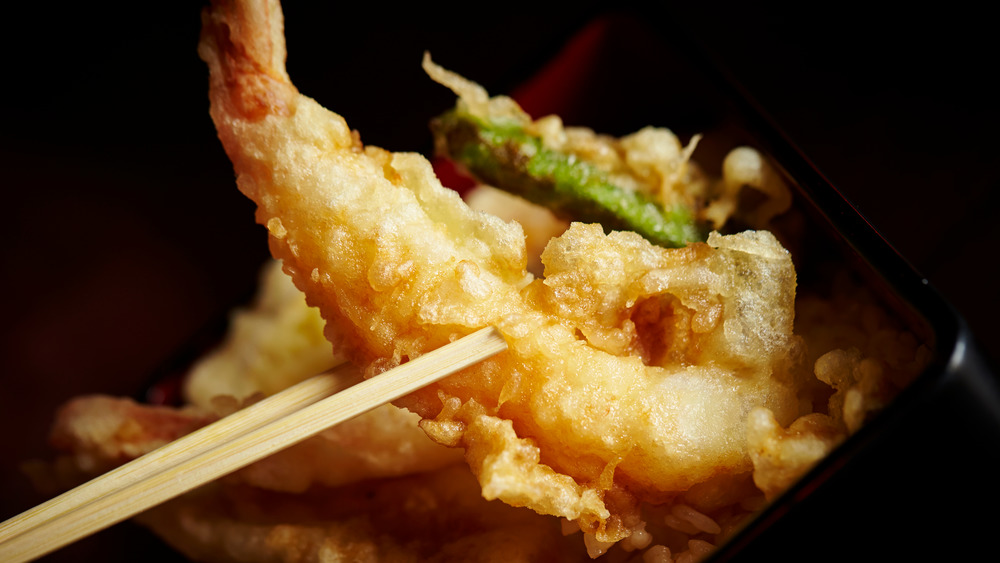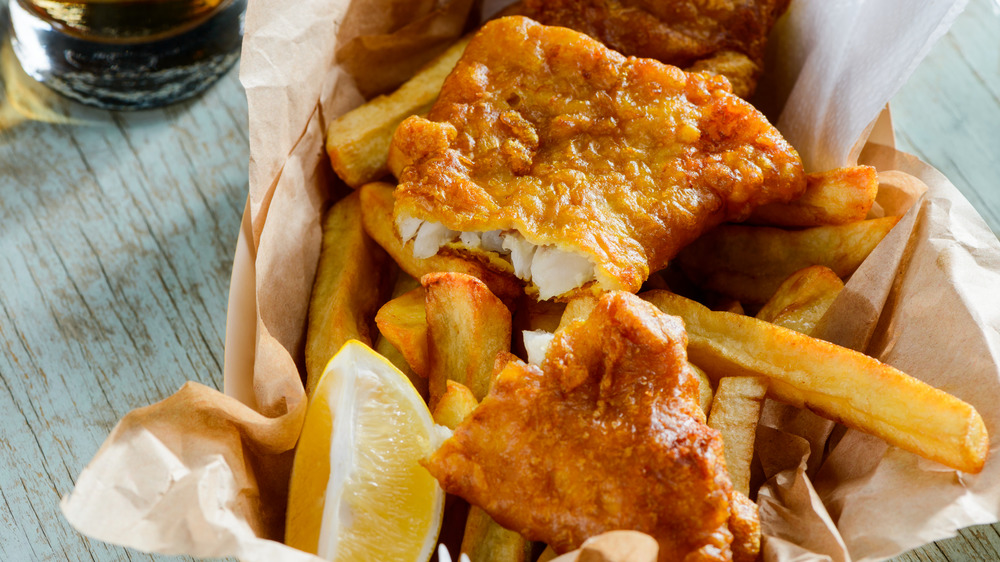The Real Reason Your Fish Batter Is Soggy
For many home cooks, frying is like the Holy Grail of the kitchen: It makes everything taste amazing. But frying can be one of the most challenging techniques to tackle. There are so many things that can go wrong: Your food could be perfectly crispy on the outside, and raw in the middle. The batter could fall off. The food could be tough and dry, and the coating light as when it first went on. In one of the most confusing situations, batter could be soggy and weighed down with oil.
But as with everything, practice makes perfect, and frying is no exception. And with a few key steps, you can kiss soggy batter goodbye.
Before we get to soggy batter prevention, it's time to get a few other elements straight. What to Cook Today offers up a few pro tips. They make a classic flour and water mixture, but also add in rice flour for extra lightness, and baking powder, which actually creates tiny air bubbles that expand the batter, which also results in lighter, crispier coating (via Our Everyday Life). For a gluten-free take, which might be even crispier than the wheat flour version, What to Cook Today swaps in more rice flour and cornstarch.
Soggy batter prevention that works every time
The key to sog-free batter is surprisingly simple: a light touch when mixing, plus cold water (via What to Cook Today). If you've gotten the dreaded limp fried coating, you might have over-mixed your batter, which forms more pesky gluten that readily soaks up the oil. Mix batter until just combined — no more, and no less.
You might also be making the mistake of adding warm water. It's not totally clear why cold water works, but some say ice-cold water makes better batter. One user on Reddit said that warm water causes a gluten-forming reaction with flour quicker than cold water — and Bakerpedia backs up this temperature relationship.
Some more tips for perfect crispy batter: double fry if you have the time. This process calls for a low-temperature first fry which acts to cook the veggie, meat or fish inside. A quick second round of high-temp frying crisps up the outside and brings it to the perfect level of golden-brown. This method is effective in preventing the dreaded perfect-on-the-outside, raw-on-the-inside fried bite. Frying at the right temperature is key: 330 degrees Fahrenheit should be just right, and it's important not to overcrowd the cooking oil so you don't bring the temperature down too much with cold food (via What to Cook Today). With just a few handy tips, restaurant-level perfection can finally be yours.

